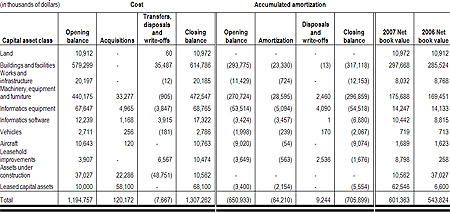
Based on the errors on the validation set, the optimal model parameters set is determined using the one with the lowest validation error (Xu and Goodacre, 2018[49]). Validation processes go beyond the simple back testing of a model using historical data to examine ex-post its predictive capabilities, and ensure that the model’s outcomes are reproducible. Interestingly, AI applications risk being held to a higher standard and thus subjected to a more onerous explainability requirement as compared to other technologies or complex mathematical models in finance, with negative repercussions for innovation (Hardoon, 2020[33]). https://www.accountingcoaching.online/ The objective of the explainability analysis at committee level should focus on the underlying risks that the model might be exposing the firm to, and whether these are manageable, instead of its underlying mathematical promise. A minimum level of explainability would still need to be ensured for a model committee to be able to analyse the model brought to the committee and be comfortable with its deployment. The difficulty in decomposing the output of a ML model into the underlying drivers of its decision, referred to as explainability, is the most pressing challenge in AI-based models used in finance.
Benefits from AI in your finance department
Additionally, 41 percent said they wanted more personalized banking experiences and information. Let’s take a look at the areas where artificial intelligence in finance is gaining momentum and highlight the companies that are leading https://www.simple-accounting.org/nonprofits-and-charities/ the way. Learn how to transform your essential finance processes with trusted data, AI insights and automation. Enroll in the “Advanced AI & Prompt Engineering Course” at PW Skills to master cutting-edge AI technologies.
Scaling gen AI in banking: Choosing the best operating model
She is a recipient of several scientific and industry awards including Microsoft’s top PhD thesis in the country award, Cloudera’s top AI/ML application award, Google Women in Engineering award, and a JPMC prolific inventor with 30+ patents and 60+ peer reviewed publications. Looking toward the future of finance, Stirrup sees a large shift in store for the finance function. While AI will likely never fully replace finance team members, it may become a significant part of their day-to-day work. A 2023 study by Oracle and New York Times bestselling author Seth Stephens-Davidowitz shed light on the dilemma faced by business leaders around decision-making—and the results were sobering. In the NVIDIA survey, more than 80% of respondents reported increased revenue and decreased annual costs from using AI-enabled applications.
- To choose the operating model that works best, financial institutions need to address some important points, such as setting expectations for the gen AI team’s role and embedding flexibility into the model so it can adapt over time.
- AI-driven tools like chatbots and automated advisory services provide instant responses to customer inquiries, facilitating uninterrupted banking and financial advice.
- Such loss of jobs replaced by machines may result in an over-reliance in fully automated AI systems, which could, in turn, lead to increased risk of disruption of service with potential systemic impact in the markets.
- The technology analyzes digital images and videos to create classification or high-level descriptions that can be used for decision-making.
- However, the use-cases of AI in finance are not restricted to ML models for decision-making and expand throughout the spectrum of financial market activities (Figure 2.1).
Robotic process automation in financial services

This confirms that the application potential of AI is very broad, and that any industry may benefit from it. Alpaca uses proprietary deep learning technology and high-speed data storage to support its yield farming platform. (Yield farming is when cryptocurrency investors pool their funds to carry out smart contracts that gain interest.) Alpaca is compatible with dozens of cryptocurrencies and allows users to lend assets to other investors in exchange for lending fees and protocol rewards. Overall, the integration of AI in finance is creating a new era of data-driven decision-making, efficiency, security and customer experience in the financial sector. This strategic use of AI ensures that financial services remain innovative and responsive to market dynamics and customer needs.

Deep neural networks mimic the human brain through a set of algorithms designed to recognise patterns, and are less dependent on human intervention to function and learn (IBM, 2020[9]). Traders can execute large orders with minimum market impact by optimising size, duration and order size of trades in a dynamic manner based on market conditions. The use of such techniques can be beneficial for market makers in enhancing the management of their inventory, reducing the cost of their balance sheet. To capture the benefits of these exciting new technologies while controlling the risks, companies must invest in their software development and data science capabilities. And they will need to build robust frameworks to manage data quality and model engineering, human–machine interaction, and ethics.

AI systems in finance offer round-the-clock availability, ensuring continuous support and service to customers regardless of time zones or geographical boundaries. This 24/7 accessibility is especially critical in today’s global financial environment, where transactions and interactions occur at all hours. This capability is pivotal in areas like investment management, where AI algorithms predict market trends and asset performance, helping institutions and investors make informed decisions.
The company’s platform uses natural language processing, machine learning and meta-data analysis to verify and categorize a customer’s alternate investment documentation. AI fosters innovation in finance by equipping institutions with advanced tools to enhance existing services and develop new ones. This technological empowerment enables banks and financial companies to explore untapped markets and tailor offerings to meet diverse customer needs more effectively. Additionally, the ability to handle vast amounts of data quickly and accurately helps firms make swift, informed decisions, crucial for maintaining competitiveness in the fast-paced financial sector. AI analyzes customer sentiments through social media monitoring and feedback analysis to help financial institutions tailor products and services to meet customer expectations better.
While exploring opportunities for deploying Al initiatives, companies should explore product and service expansion opportunities. This could be kick-started by measuring and tracking outcomes of AI initiatives to the company’s top line. Adding AI adoption to sales and performance targets and providing AI tools for sales and marketing personnel could also help in this direction. That said, what differentiated frontrunners (figure 7) is the fact that more leading respondents are measuring and tracking metrics pertaining to revenue enhancement (60 percent) and customer experience (47 percent) for their AI projects. This approach helped frontrunners look at innovative ways to utilize AI for achieving diverse business opportunities, which has started to bear fruit. Generative AI might start by producing concise and coherent summaries of text (e.g., meeting minutes), converting existing content to new modes (e.g., text to visual charts), or generating impact analyses from, say, new regulations.
Additionally, in the risk management area, AI aids with bankruptcy and credit risk prediction in both corporate and financial institutions; fraud detection and early warning models monitor the whole financial system and raise expectations for future artificial market surveillance. This suggests that global financial crises or unexpected financial turmoil will be likely to be anticipated and prevented. AI models execute trades with unprecedented speed and precision, taking advantage of real-time market data to unlock deeper insights and dictate where investments are made. By analyzing intricate patterns in transaction data sets, AI solutions allow financial organizations to improve risk management, which includes security, fraud, anti-money laundering (AML), know your customer (KYC) and compliance initiatives. AI is also changing the way financial organizations engage with customers, predicting their behavior and understanding their purchase preferences. This enables more personalized interactions, faster and more accurate customer support, credit scoring refinements and innovative products and services.
As AI capabilities improve workflows by automating tasks, generating insights, and creating content, the future of the finance function looks more analysis driven and strategic, with finance teams working across the organization to share insights that create value for the business. An operating model is a representation of how a company runs, including its structure (roles and responsibilities, governance, and decision making), processes (performance management, systems, and technology), and people (skills, culture, and informal networks). We have found that across industries, a high degree of centralization works best for gen AI operating models. Without central oversight, pilot use cases can get stuck in silos and scaling becomes much more difficult.
Developed economies have regulations in place to ensure that specific types of data are not being used in the credit risk analysis (e.g. US regulation around race data or zip code data, protected category data in the United Kingdom). Regulation promoting anti-discrimination principles, such as the US fair lending laws, exists in many jurisdictions, and regulators are globally considering the risk of potential bias and discrimination risk that AI/ML and algorithms can pose (White login or create an account 2020 & Case, 2017[22]). A number of defences are available to traders wishing to mitigate some of the unintended consequences of AI-driven algorithmic trading, such as automated control mechanisms, referred to as ‘kill switches’. These mechanisms are the ultimate line of defence of traders, and instantly switch off the model and replace technology with human handling when the algorithm goes beyond the risk system and do not behave in accordance with the intended purpose.
Frontrunners seem to have realized that it does not matter how good the insights generated from AI are if they do not lead to any executive action. A good user experience can get executives to take action by integrating the often irrational aspect of human behavior into the design element. Once companies start implementing AI initiatives, a mechanism for measuring and tracking the efficacy of each AI access method could be evaluated. Identifying the appropriate AI technology approach for a specific business process and then combining them could lead to better outcomes.
Case examples in this article show how these technologies can accelerate and enable access to critical business information, giving human decision makers the information to make thoughtful and timely choices. The nascent nature of gen AI has led financial-services companies to rethink their operating models to address the technology’s rapidly evolving capabilities, uncharted risks, and far-reaching organizational implications. More than 90 percent of the institutions represented at a recent McKinsey forum on gen AI in banking reported having set up a centralized gen AI function to some degree, in a bid to effectively allocate resources and manage operational risk. Bank default prediction models often rely solely on accounting information from banks’ financial statements. To enhance default forecast, future work should consider market data as well (Le and Viviani 2018). Fraud detection based on AI needs further experiments in terms of training speed and classification accuracy (Kumar et al. 2019).
Section three offers policy implications from the increased deployment of AI in finance, and policy considerations that support the use of AI in finance while addressing emerging risks. It provides policy recommendations that can assist policy makers in supporting AI innovation in finance, while sharpening their existing arsenal of defences against risks emerging from, or exacerbated by, the use of AI. With the experience of several more AI implementations, frontrunners may have a more realistic grasp on the degree of risks and challenges posed by such technology adoptions. Starters and followers should probably brace themselves and start preparing for encountering such risks and challenges as they scale their AI implementations.